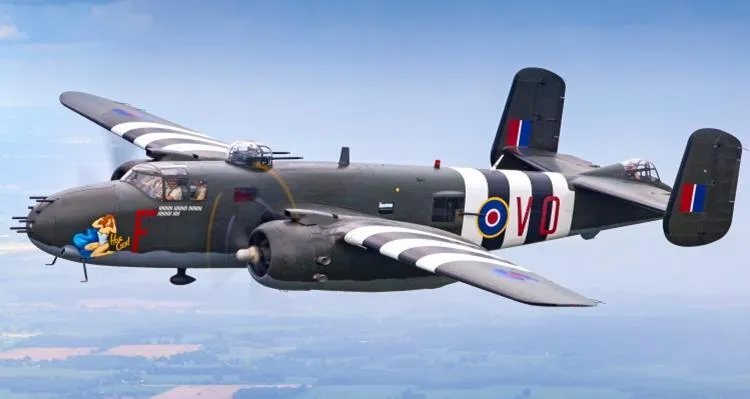Christie, Richard Morley
Killed in Action 1943-07-30


Birth Date: 1919-May-24
Born:
Ryerson Meyers Christie & Ada Helena Christie
Home: Cardston, Alberta (parents)
Enlistment:
Enlistment Date: Unknown
Service
RCAF
Unit
226 (MB) Sqn- Squadron (RAF)
Non Sibi Sed Patriae For country not for self
Base
Rank
Flying Officer
Position
Flying Officer
Service Numbers
J/10140
First Burial
 Runnymede Memorial Surrey, Uk
Runnymede Memorial Surrey, Uk
The crew of Mitchell Mk II FV-932 was detailed for a sea search and was forced down in the North Sea north of the Frisian Islands by enemy fighters.
Flying Officer Christie ditched the aircraft successfully allowing the other three members of the crew to get out and get into a dinghy. He didn't make it out of the aircraft.
Killed:Flying Officer Richard Morley Christie RCAF J/10140 KIA Runnymede Memorial Panel 173.Sergeant Eric Richard Norburn RAF KIA Runnymede Memorial Panel 160.
The crew who escaped in the dinghy were picked up by a rescue launch.Pilot Officer A P Ayton-JonesSergeant D W BishopSergeant J F Lecomber
North American Mitchell B-25 B-25D B-25J

Canadian Warplane Heritage Museum
The North American B-25 Mitchell is an American medium bomber that was introduced in 1941 and named in honor of Major General William "Billy" Mitchell, a pioneer of U.S. military aviation. Used by many Allied air forces, the B-25 served in every theater of World War II, and after the war ended, many remained in service, operating across four decades. Produced in numerous variants, nearly 10,000 B-25s were built.
The North American B-25 Mitchell was flown by the RCAF during and after the Second World War. The RCAF flew the B-25 Mitchell for training during the war and continued flying operations after the war, in Canada with most of 162 Mitchells received. The first B-25s had originally been diverted to Canada from RAF orders. These included one Mitchell Mk. I, 42 Mitchell Mk. IIs, and 19 Mitchell Mk. IIIs. No 13 (P) Squadron was formed unofficially at RCAF Station Rockcliffe in May 1944 and flew Mitchell Mk. IIs on high-altitude aerial photography sorties. No. 5 OTU (Operational Training Unit) at Boundary Bay, British Columbia and Abbotsford, British Columbia, operated the B-25D Mitchell in a training role together with B-24 Liberators for Heavy Conversion as part of the BCATP. The RCAF retained the Mitchell until October 1963.
No. 418 (Auxiliary) Squadron received its first Mitchell Mk. IIs in January 1947. It was followed by No. 406 (Auxiliary), which flew Mitchell Mk. IIs and Mk. IIIs from April 1947 to June 1958. No. 418 Operated a mix of Mk. IIs and Mk. IIIs until March 1958. No. 12 Squadron of Air Transport Command also flew Mitchell Mk. IIIs along with other types from September 1956 to November 1960. In 1951, the RCAF received an additional 75 B-25Js from USAF stocks to make up for attrition and to equip various second-line units..Wikipedia and Harold Skaarup web page
 Canadian Virtual War Memorial
Canadian Virtual War Memorial Commonwealth War Graves Commission
Commonwealth War Graves Commission www.findagrave.com
www.findagrave.com Mitchell Bomber
Mitchell Bomber Wikipedia Mitchell Bomber
Wikipedia Mitchell Bomber Harold A Skaarup Web Page
Harold A Skaarup Web Page